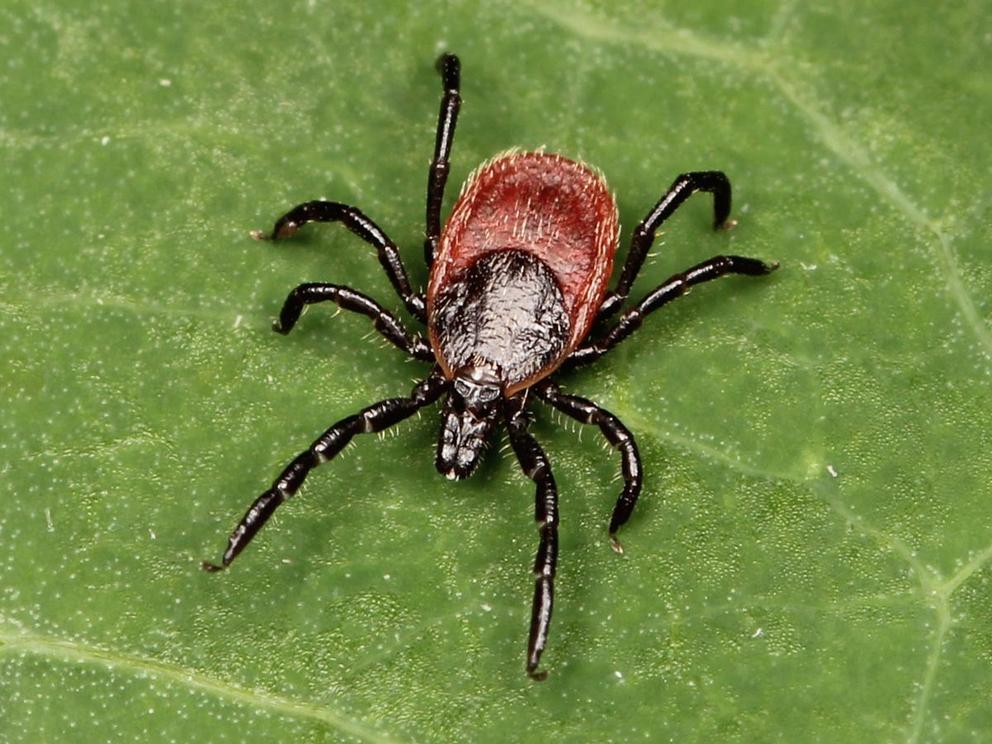Study: are ticks behind a new virus infecting people in China?
There’s a new virus on the rise in China and the culprit behind its spread may just be crawling around the corner.
Dubbed the “Alongshan Virus” after the northeastern Chinese town where it was first discovered, the virus is linked to a number of symptoms, including fevers, headaches, fatigue, nausea, rashes and in extreme cases, falling into coma.
While the sickness is currently found only in northeastern China, experts from several leading universities and institutions in the country, through a report published in the New England Journal of Medicine, say it could potentially gain a much wider range thanks to the spread of ticks native to the region.
Initially thought to be a case of tick-borne encephalitis virus (TBEV), the sickness was first identified in 2017 in a 42-year-old farmer from Alongshan, who, after developing a fever, went to a county hospital in Hulunbuir City, in inner Mongolia. However, the man, who also reported having a history of tick bites, tested negative.
Succeeding tests soon showed that the patient was infected with a virus genetically different from TBEV and other known viruses, the report revealed.
After identifying the new virus, the researchers started examining blood samples from patients who exhibited the same symptoms as the Alongshan farmer. Of the 374 who met the criteria, 86 were confirmed to be infected with the Alongshan virus. Nearly all of them were farmers or forestry workers, the report said.
The Alongshan virus, according to the Centers for Disease Control and Prevention (CDC), belongs to a family of viruses called Flaviviridae, the same family that includes TBEV, as well as mosquito-borne viruses such as the dreaded dengue fever, the West Nile virus and the Zika virus.
The researchers, in their report, said the Alongshan virus generally had an incubation period of three to seven days. Aside from causing persistent moderate headache, fatigue and nausea in infected persons, the virus also causes symptoms such as poor appetite, depression, rashes and muscle and joint pains.
As noted in their study, all 86 patients were treated based on their symptoms, all of which soon went away in about six to eight days of treatment.
Although the patients spent an average of 10 to 14 days in the hospital, all of them eventually recovered without any long-term complications.
The researchers suspected the taiga tick (Ixodes persulcatus) – a species commonly found throughout China, Korea, Japan, Mongolia, Russia and parts of eastern Europe – of being the virus’ main vector. However, upon conducting tests in both ticks and mosquitoes in the region, the researchers found that the virus was present in the systems of both animals.
“Our findings suggest that [the Alongshan virus] may be the cause of a previously unknown febrile disease, and more studies should be conducted to determine the geographic distribution of this disease outside its current areas of identification,” the authors concluded.
Avoid getting bit by ticks
Aside from the Alongshan virus, ticks also spread other serious diseases and infections. Among the most common are the following:
- Lyme disease — This tick-borne disease causes joint pain, and in extreme cases, brain tissue inflammation and complications within the nervous system.
- Rocky Mountain spotted fever — A serious tick-borne disease, Rocky Mountain Spotted Fever can potentially lead to multiple organ failure if not treated immediately.
- Anaplasmosis — People with anaplasmosis will often have fever, headache, chills and muscle aches. If left untreated, this infection may disrupt the blood’s clotting process, which can lead to organ failure.
- Babesiosis — A malaria-like disease, this infection is caused by the parasite Babesia. Among its symptoms are the development of blood clots, unstable blood pressure and possible organ failure.
With this in mind, it’s best to start proactively avoiding these tiny pests. Some of the things one can do to avoid getting bitten by ticks are the following:
- Do not go to tick-infested areas.
- Apply natural and organic insect repellent on your skin before going outdoors. Essential oils extracted from lemongrass, cedar, peppermint and thyme have been proven effective.
- Spray a solution of white vinegar and water on affected, tick-infested areas.
- Clean your surroundings: mow your front yard, take out the trash. Ticks love living in dirty, dark places.
For full references please use source link below.

